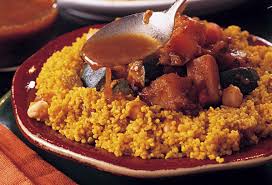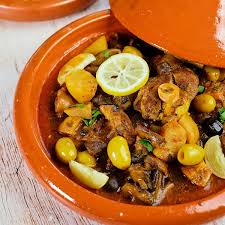The Delightful Feast of a Traditional Moroccan Meal
When it comes to culinary experiences that tantalize the taste buds and transport you to a world of vibrant flavours and spices, few cuisines can rival the richness and diversity of traditional Moroccan food. A traditional Moroccan meal is not just a feast for the senses; it is a reflection of the country’s history, culture, and hospitality.
The Ritual of Sharing
Central to the Moroccan dining experience is the concept of sharing. Meals are often served family-style, with an array of dishes laid out on a communal platter for everyone to enjoy. This communal approach to dining fosters a sense of connection and togetherness among diners, making every meal a social occasion filled with laughter and conversation.
The Flavours of Morocco
At the heart of every traditional Moroccan meal are the bold flavours and aromatic spices that define the country’s cuisine. From the earthy warmth of cumin and cinnamon to the fiery kick of harissa and paprika, each dish is a symphony of tastes that dance on your palate.
One iconic dish that embodies this explosion of flavours is tagine. This slow-cooked stew features tender meat or vegetables simmered with an assortment of spices, dried fruits, and nuts, creating a harmonious blend of sweet and savoury notes that is truly unforgettable.
The Artistry of Presentation
In Morocco, food is not just sustenance; it is an art form. Traditional dishes are meticulously prepared and presented with care, often garnished with fresh herbs, preserved lemons, or a sprinkling of toasted almonds to add visual appeal.
Meals are typically served on colourful ceramic plates or in decorative tagine pots that not only enhance the dining experience but also showcase Morocco’s rich artisanal heritage.
The Sweet Finale
No Moroccan meal is complete without indulging in a selection of sweet treats that will satisfy even the most discerning sweet tooth. From honey-drenched pastries like baklava to almond-studded cookies known as ghriba, Moroccan desserts are a celebration of sugar and spice.
To wash down these delectable delights, Moroccans often enjoy mint tea—a fragrant infusion of green tea leaves and fresh mint leaves that refreshes the palate and serves as a symbol of hospitality.
In Conclusion
A traditional Moroccan meal is more than just food; it is an expression of culture, tradition, and community. So next time you sit down to savour the flavours of Morocco, remember that you are not just eating—you are embarking on a culinary journey through centuries-old traditions that continue to enchant diners around the world.
Exploring Traditional Moroccan Cuisine: Key Ingredients, Popular Dishes, and Home Cooking Tips
- What is a traditional Moroccan meal?
- What are the key ingredients used in Moroccan cuisine?
- How is a traditional Moroccan meal typically served?
- What are some popular dishes in Moroccan cuisine?
- Are there any vegetarian options in traditional Moroccan meals?
- What is the significance of mint tea in Moroccan dining?
- How can I recreate a traditional Moroccan meal at home?
What is a traditional Moroccan meal?
A traditional Moroccan meal is a culinary experience that embodies the essence of Morocco’s rich gastronomic heritage. Typically served family-style, it features a diverse array of dishes bursting with bold flavours and aromatic spices. From the iconic tagines simmered to perfection with a medley of ingredients to the colourful salads and couscous dishes that adorn the table, each element of a traditional Moroccan meal reflects the country’s cultural diversity and culinary artistry. The ritual of sharing these delectable dishes fosters a sense of community and togetherness, making every meal a celebration of tradition, hospitality, and the vibrant tapestry of Moroccan cuisine.
What are the key ingredients used in Moroccan cuisine?
Moroccan cuisine is renowned for its vibrant and aromatic flavours, which are achieved through the skillful use of key ingredients that define the country’s culinary identity. Some of the essential components in Moroccan cooking include spices such as cumin, cinnamon, paprika, and saffron, which infuse dishes with depth and complexity. Olive oil, preserved lemons, fresh herbs like parsley and coriander, and a variety of dried fruits and nuts add layers of texture and taste to traditional Moroccan meals. Meat such as lamb, chicken, and beef feature prominently in savoury dishes like tagines, while couscous—a staple grain in Moroccan cuisine—serves as a versatile base for a myriad of flavourful creations. These key ingredients come together to create a symphony of flavours that make Moroccan cuisine a true culinary delight.
How is a traditional Moroccan meal typically served?
In a traditional Moroccan meal, the dining experience is a communal affair that emphasises sharing and togetherness. Typically, a variety of dishes are served on a large communal platter, allowing diners to sample and enjoy different flavours and textures. The meal often starts with small appetisers like olives, nuts, and bread before moving on to the main courses, which can include tagines, couscous, grilled meats, and vegetable dishes. Meals are accompanied by freshly baked bread and mint tea, adding to the sensory richness of the experience. The act of sharing food from a central dish not only fosters a sense of unity among diners but also reflects the generous hospitality that is deeply ingrained in Moroccan culture.
What are some popular dishes in Moroccan cuisine?
Moroccan cuisine boasts a diverse array of popular dishes that showcase the country’s culinary heritage and vibrant flavours. Some of the most beloved dishes include tagine, a slow-cooked stew typically made with meat, vegetables, and a blend of aromatic spices; couscous, a staple dish made from steamed semolina grains served with a rich broth and an assortment of meats or vegetables; and pastilla, a savoury-sweet pastry filled with spiced meat, almonds, and dusted with powdered sugar—a true delight for the taste buds. These iconic dishes represent just a glimpse of the delectable offerings that await those eager to explore the gastronomic wonders of Moroccan cuisine.
Are there any vegetarian options in traditional Moroccan meals?
In traditional Moroccan cuisine, there are indeed a variety of vegetarian options available that showcase the country’s rich culinary heritage. From hearty vegetable tagines bursting with seasonal produce to fragrant couscous dishes adorned with an array of roasted vegetables and chickpeas, vegetarians can delight in the diverse flavours and textures that Moroccan cuisine has to offer. Additionally, mezze-style appetisers like zesty salads, creamy hummus, and stuffed vine leaves provide a delicious introduction to the vibrant world of vegetarian dining in Morocco.
What is the significance of mint tea in Moroccan dining?
Mint tea holds a revered place in Moroccan dining, serving as a symbol of hospitality, tradition, and social connection. Known locally as “atai,” this fragrant infusion of green tea leaves and fresh mint leaves is not merely a beverage but a cornerstone of Moroccan culture. The ritual of preparing and serving mint tea is steeped in tradition, with hosts often welcoming guests with a steaming pot of this refreshing elixir. The sweet and aromatic flavour of mint tea complements the rich and spicy dishes of Moroccan cuisine, acting as a palate cleanser between bites. Beyond its culinary role, sharing mint tea fosters bonds between individuals, encouraging conversation and camaraderie around the communal table. In essence, mint tea embodies the essence of Moroccan hospitality—a warm gesture that transcends mere refreshment to create lasting connections among those who partake in its soothing brew.
How can I recreate a traditional Moroccan meal at home?
To recreate a traditional Moroccan meal at home, start by stocking up on essential ingredients such as aromatic spices like cumin, cinnamon, and paprika, as well as preserved lemons, olives, and couscous. Choose a classic Moroccan dish like tagine or couscous with lamb and vegetables as your main course. Slow-cook the ingredients to allow the flavours to meld together beautifully. Don’t forget to garnish your dish with fresh herbs and nuts for that authentic touch. Pair your meal with mint tea for a truly Moroccan dining experience that will transport you to the bustling souks of Marrakech.




